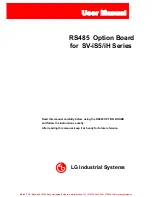
Functions
2.5 Distance Protection
SIPROTEC, 7SD5, Manual
C53000-G1176-C169-5, Release date 02.2011
124
2.5.1.3
Calculation of the Impedances
A separate measuring system is provided for each of the six possible impedance loops L1-E, L2-E, L3-E, L1-
L2, L2-L3, L3-L1. The phase-to-earth loops are evaluated when an earth fault detection is recognized and the
phase current exceeds a settable minimum value
Minimum Iph>
. The phase-to-phase loops are evaluated
when the phase current in both of the affected phases exceeds the minimum value
Minimum Iph>
.
A jump detector synchronizes all the calculations with the fault inception. If a further fault occurs during the eval-
uation, the new measured values are immediately used for the calculation. The fault evaluation is therefore
always done with the measured values of the current fault condition.
Phase-to-Phase Loops
To calculate the phase-to-phase loop, for instance during a two-phase short circuit L1-L2 (Figure 2-43), the loop
equation is:
I
L1
· Z
L
–
I
L2
· Z
L
= U
L1-E
– U
L2-E
with
U,
I
the (complex) measured quantities and
Z = R + jX
the (complex) line impedance.
The line impedance is computed to be
Figure 2-43
Two-phase fault clear of earth, fault loop
The calculation of the phase-to-phase loops does not take place as long as one of the concerned phases is
switched off (during single-pole dead time) to avoid an incorrect measurement with the undefined measured
values existing during this state. A state recognition (refer to Section 2.25.1) provides the corresponding block-
ing signal. A logic block diagram of the phase-to-phase measuring system is shown in Figure 2-44.












































